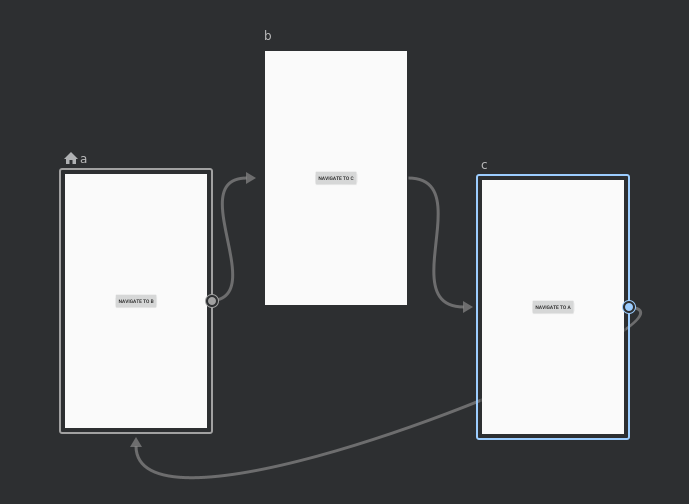A clear example of where you need to pop back to a destination is when your navigation is circular. This document outlines that use case.
Scenario
Imagine your app has three destinations: A, B, and C. It also has actions that lead from A to B, B to C, and C back to A. The corresponding navigation graph appears as follows:

With each navigation action, the NavController adds the new destination to the
back stack. As such, repeatedly navigating through the flow in the diagram would
cause your back stack would to contain multiple sets of each destination: A, B,
C, A, B, C, A, B, C.
Solution
To avoid repetition in your back stack, specify popUpTo() and
inclusive in your call to NavController.navigate() or in your
navigation action.
Consider a case where after reaching destination C, the back stack contains one
instance of each destination: A, B, C. You need to ensure that you have defined
popUpTo() and inclusive in the action or call to navigate() that takes the
user from destination C to destination A.
In this case, when the user navigates from destination C back to destination A,
the NavController also pops up to A. This means that it removes B and C from
the stack. With inclusive = true, it also pops the first A, effectively
clearing the stack.
Compose implementation
The following is the implementation of the solution for circular popUpTo() in
Compose:
// When creating your `NavGraph` in your `NavHost`.
composable("c") {
DestinationC(
onNavigateToA = {
navController.navigate("a") {
popUpTo("a") {
inclusive = true
}
}
},
)
}
Views implementation
The following is the implementation of the solution for circular popUpTo in
Views:
<fragment
android:id="@+id/c"
android:name="com.example.myapplication.C"
android:label="fragment_c"
tools:layout="@layout/fragment_c">
<action
android:id="@+id/action_c_to_a"
app:destination="@id/a"
app:popUpTo="@+id/a"
app:popUpToInclusive="true"/>
</fragment>
